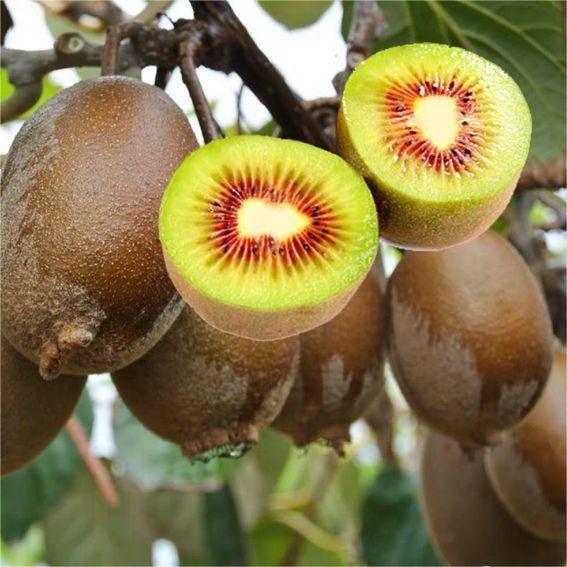作者简介:
撰稿人:安徽阜阳 金峰 ECOAGRICULTURE CO.,LTD.,园艺专业知识与优质植物和树木的完美结合!凭借 30 多年的经验,我们赢得了声誉,成为提供一流植物以满足您所有园艺需求的专家。最初只有几个简陋的塑料温室,如今已发展成为占地约 300 英亩的庞大业务。

猕猴桃果肉呈鲜绿色,酸甜可口,是任何果园的美味补充。无论您是经验丰富的园丁还是初学者,种植猕猴桃都是一次有益而愉快的体验。在这种全面
-
选择品种:
在开始种植猕猴桃之前,选择适合你的气候和喜好的品种很重要。猕猴桃主要有两种类型:毛猕猴桃(Actinidia deliciosa)和光滑猕猴桃(Actinidia chinensis)。毛猕猴桃是最常见的类型,而光滑猕猴桃则以其更甜的口感和更光滑的质地而闻名。
-
种植:
猕猴桃藤蔓在富含有机质的排水良好的土壤中茁壮成长。在春季最后一次霜冻之后,将它们种植在阳光充足的地方。土壤的 pH 值应在 5.5 到 7.5 之间。如果土壤过酸,可以通过添加石灰来提高 pH 值。训练藤蔓在坚固的棚架系统上生长,间隔约 10 英尺。
-
浇水:
猕猴桃藤需要定期浇水,尤其是在生长季节。它们喜欢潮湿的土壤,但不能忍受积水。浇水要深且不频繁,以促进深根生长。在植物根部周围覆盖覆盖物可以帮助保持水分并抑制杂草生长。
-
施肥:
为了确保丰收, 猕猴桃藤 需要定期施肥。在生长季节,每 4-6 周施用一次均衡肥料,例如 10-10-10 或 20-20-20。按照制造商的说明进行施用。此外,在种植前将有机物质(例如堆肥)混入土壤可以提供长期的营养效益。
-
修剪:
修剪对于保持猕猴桃藤的健康和产量至关重要。冬季修剪是在藤蔓休眠期间进行的,包括去除枯枝或病枝、疏除过于密集的树枝以及修剪藤蔓。夏季修剪的重点是控制过度生长、将能量转向果实生产以及保持藤蔓的大小和形状。

-
授粉:
猕猴桃属雌雄异株植物,也就是说它们有雌雄两性植物。为了确保果实产量,雌雄植物必须靠近授粉。虽然有些猕猴桃品种是自花授粉的,但附近有雄株可以增加果实结实率和产量。
-
病虫害管理:
和其他水果作物一样, 奇异果 容易受到害虫和疾病的侵害。常见的害虫包括蚜虫、螨虫、介壳虫和毛虫。定期监测、早期发现和实施综合害虫管理 (IPM) 措施有助于有效控制害虫。细菌性溃疡病、白粉病和根腐病等疾病可以通过适当的卫生处理、抗病品种以及(如有必要)合理使用杀菌剂来控制。
-
收获和储存:
猕猴桃通常在秋季(9 月至 11 月)采摘,此时果实已完全成熟。果实应坚硬,但轻轻按压即可变软。如果采摘过早,果实可能无法完全成熟。采摘后,猕猴桃可存放在阴凉干燥的地方数周。但是,最好尽快食用,以保持最新鲜的味道和口感。
结论:
种植猕猴桃需要仔细注意细节和适当的管理,但只要掌握正确的技巧,您就可以收获丰盛美味的水果。从选择合适的品种到提供最佳的生长条件、采用良好的修剪技术以及实施病虫害防治措施,您将顺利地种植出一个成功的猕猴桃园。请记住根据您所在地区的气候调整您的方法,并寻求当地专家的指导以获得额外的支持。祝您猕猴桃种植愉快!
